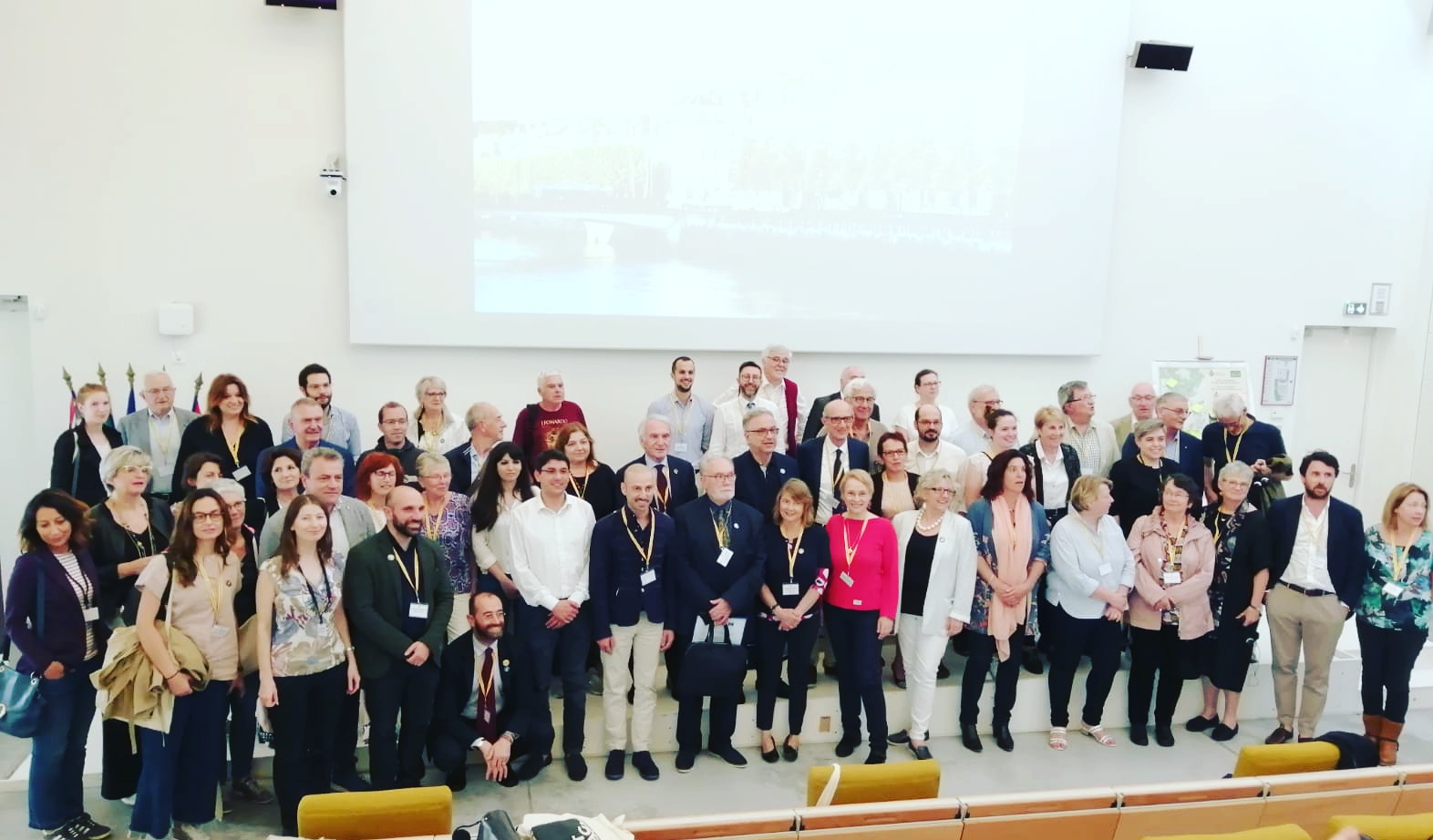The European Association of Via Francigena Ways Assembly in Besançon on Friday 14th June strengthens the EAVF's role of route coordinator along the 3,000km from Canterbury to Santa Maria di Leuca.
The Via Francigena believes in peace, tollerance, dialogue, democracy and social cohesion promoted by the Council of Europe regarding the Cultural Routes project launched in 1987 in Santiago de Compostela.
The AEVF family grows with passion and awareness: there are now 155 local authorities in the four countries that are members of AEVF, an association charged by the Council of Europe with protecting and enhancing the Via Francigena. "Eighteen years of intense association life constitute a goal on which many would not have bet. This voluntary network of municipalities, provinces and regions established in Fidenza in 2001, is undergoing a phase of great activism in all four of its national sections and also in the southern section, up to Santa Maria di Leuca ", underlined President Massimo Tedeschi.
Eleven new members joined the AEVF network at the Besançon Assembly: the municipalities of Faverolles (Haute-Marne, Grand-Est), Montot (Haute-Saône, Bourgogne-Franche-Comté), Orbe (Canton Vaud), Borgofranco d'Ivrea (Turin, Piedmont), Cadeo (Piacenza, Emilia-Romagna), Carrara (Massa-Carrara, Tuscany), Montignoso (Massa-Carrara, Tuscany), the department of Haute-Marne (Grand-East), the Alta Murgia Park Authority (Bari and BAT) and finally the regions of Molise and Campania.
The agenda of the Assembly focused on the budget and the renewal of the associative positions: The Assembly unanimously re-elected Massimo Tedeschi as president and the six members of the college of vice-presidents: Caroline Hicks (Canterbury, Kent), Martine Gautheron (Champlitte , Bourgogne-Franche-Comté), Gaëtan Tornay (Orsières, Valais), Francesco Ferrari (Orio Litta, Lombardy), Francesco Gazzetti (Florence, Tuscany), Aldo Patruno (Bari, Puglia). For the Bureau, 12 Municipalities were also indicated - Bucey-lès-Gy (Bourgogne-Franche-Comté), Romainmôtier (Vaud), Aosta (Valle d'Aosta), Santhià (Piedmont), Pavia (Lombardy), Fornovo Taro (Emilia), Santo Stefano Magra (Liguria), Pontremoli (Tuscany), Altopascio (Tuscany), Gambassi Terme (Tuscany), Monteriggioni (Tuscany), Montefiascone (Lazio) - and 7 provinces - Haute-Marne Department (Grand Est) , Communauté d'Agglomeration du Grand Besançon (Bourgogne-Franche-Comté), Aigle-Région (Vaud), Montana Montana Val di Susa (Piedmont), Province of Pavia (Lombardy), Province of Lodi (Lombardy), Province of Siena (Tuscany) - as well as the Association du Chablais and the Tuscan Association of Via Francigena Ways and Routes. The 10 member regions, Canterbury, Rome and the three cities that host AEVF offices are: Fidenza, Piacenza and Champlitte.
During the Assembly the activity carried out in 2018 was reported and illustrated the one planned this year. In particular the state of the art of the UNESCO path, the work of the Southern Regions for the extension of the European cultural route certification of the Via Francigena in the South, the fruitful collaboration with the French Federation of the Randonnée, the international collaboration with the “Routes4U projects" , "Europe to Turkey" and with the University of Toulouse. Experiences of good practices on the route, reception and maintenance were presented in the Municipalities of the four countries crossed. Finally, a particular space was dedicated to promotion and communication.
Massimo Tedeschi, immediately after the re-election, expressed his heartfelt thanks to the associates for the trust once again granted. "The results achieved with commitment, perseverance, and a pinch of visionary madness, push us to work even harder to further develop our European project. At the base of our network, I like to remember, first of all there are the hundreds of people who make time, energy, passion and skills available to their territory. The Via Francigena is the stronger the stronger each regional stretch and each single regional stretch is stronger the stronger the entire Via Francigena is. AEVF today is carrying out very important actions to make the entire European path usable, supporting local administrations, associations and the emergence of private entrepreneurship along the way, and collaborating with new paths that are inspired by the Via's model of development and Francigena governance".
During the Assembly the public recognition of AEVF was given to Michel Thomas-Penette, director of the European Institute of Cultural Routes of the Council of Europe from 1997 to 2011, for the impulse to develop the Via Francigena in Europe. An important occasion to remember the European values ââof the itinerary and for its important human dimension that is also the basis of the European Association of Vie Francigene
Next important appointment in Bari, Friday 18th October, for the General Assembly that for the first time will take place in a city of the Via Francigena in the south. The Besançon Assembly was held in conjunction with the Outdoor Festival exhibition, held in the Micropolis spaces, where there were meetings, sporting events, debates attended by a large audience that was able to learn about the Via Francigena at the dedicated stand.
EAVF Press Release
Sorgente News:viefrancigene.org










